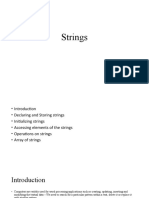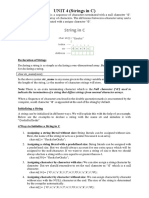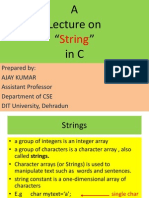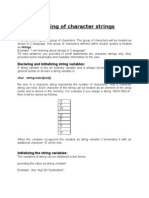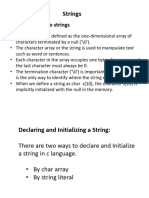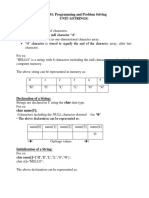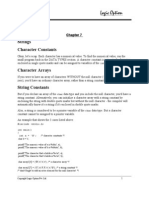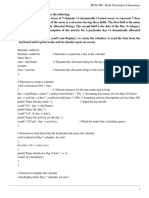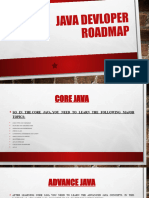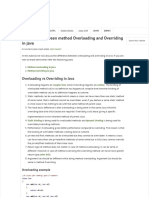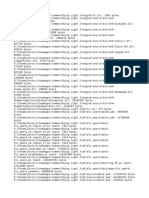0% found this document useful (0 votes)
11 views31 pagesC Module4
Module-4 covers strings and pointers in C, explaining string representation as null-terminated character arrays and various operations on strings, including reading, concatenating, and manipulating strings. It also discusses pointers, their declaration, and how to pass strings to functions. Additionally, the module introduces string taxonomy, fixed and variable-length strings, and various string manipulation functions from standard libraries.
Uploaded by
Pawan RajCopyright
© © All Rights Reserved
We take content rights seriously. If you suspect this is your content, claim it here.
Available Formats
Download as PDF, TXT or read online on Scribd
0% found this document useful (0 votes)
11 views31 pagesC Module4
Module-4 covers strings and pointers in C, explaining string representation as null-terminated character arrays and various operations on strings, including reading, concatenating, and manipulating strings. It also discusses pointers, their declaration, and how to pass strings to functions. Additionally, the module introduces string taxonomy, fixed and variable-length strings, and various string manipulation functions from standard libraries.
Uploaded by
Pawan RajCopyright
© © All Rights Reserved
We take content rights seriously. If you suspect this is your content, claim it here.
Available Formats
Download as PDF, TXT or read online on Scribd
/ 31
